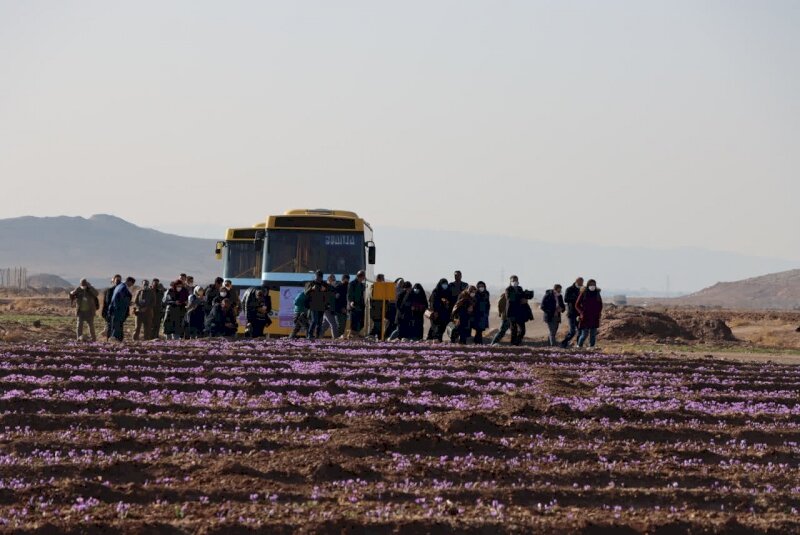‘Red gold’ magnetizes sightseers toward northeast Iranian farms

TEHRAN – During the past two months, Torbat-e Heydarieh and Zaveh county in northeastern Khorasan Razavi province hosted 12 saffron tours, a local tourism official has announced.
As saffron harvest season began in Torbat-e Heydarieh and Zaveh, tourists and individuals from all over the country visited the county for recreational or scientific-research tours, Ali Mohammadi said on Thursday.
Besides visiting saffron fields and learning about the stages of collecting and processing saffron bulbs, the tourists also visited a museum dedicated to saffron, the largest flower market in the country, the saffron research institute, and saffron companies among other places, the official added.
The tours also included visits to other historical and tourist attractions, handicraft workshops, and ecotourism resorts, as well as exhibitions and festivals, he mentioned.
Torbat-e Heydarieh is known as the land of red gold because of the large area planted with this crop and a large amount of saffron produced there, he explained.
This year, a saffron tourist train and a saffron festival were planned from Mashhad to Torbat-e Heydarieh, which was widely welcomed by travel agencies, journalists, and locals, he noted.
Iranian saffron is known as the “red gold”. Saffron is a magical ingredient in Persian culture, from aromatic foods and colorful desserts to physical and spiritual medicine. Every year, the saffron harvest season begins in early November. While most other vegetation is gone, the bright purple flowers cover the fields and create an outstanding landscape in dry regions in Iran.
Major saffron producers of Iran are located on the east side of the country. If you would like to see the biggest market, head to Mashhad, which is also known for its religious importance.
So far 450 historical structures have been identified in Torbat-e Heydarieh and Zaveh county -located 180 kilometers to the provincial capital of Mashhad- of which 80 properties have been inscribed on the National Heritage list.
Over the past couple of years, Torbat-e Heydarieh and its surroundings have yielded traces of the ancient settlements. Last year, an archaeological site was exposed on the outskirts of Torbat-e Heydarieh after torrential rains washed the soil away. The site was accessed to date back to the early and middle Islamic eras, according to preliminary studies carried out by the cultural heritage experts.
According to archaeological studies, Torbat-e Heydarieh is home to several historical caves due to its favorable habitat conditions and traces of habitation from about 40,000 years have been identified in the caves of the region. The history of the area stretches back to the Achaemenian Empire from the 6th to 4th century BC and the Parthian Empire from the 3rd century BC to the 3rd century CE.
ABU/AFM
Leave a Comment